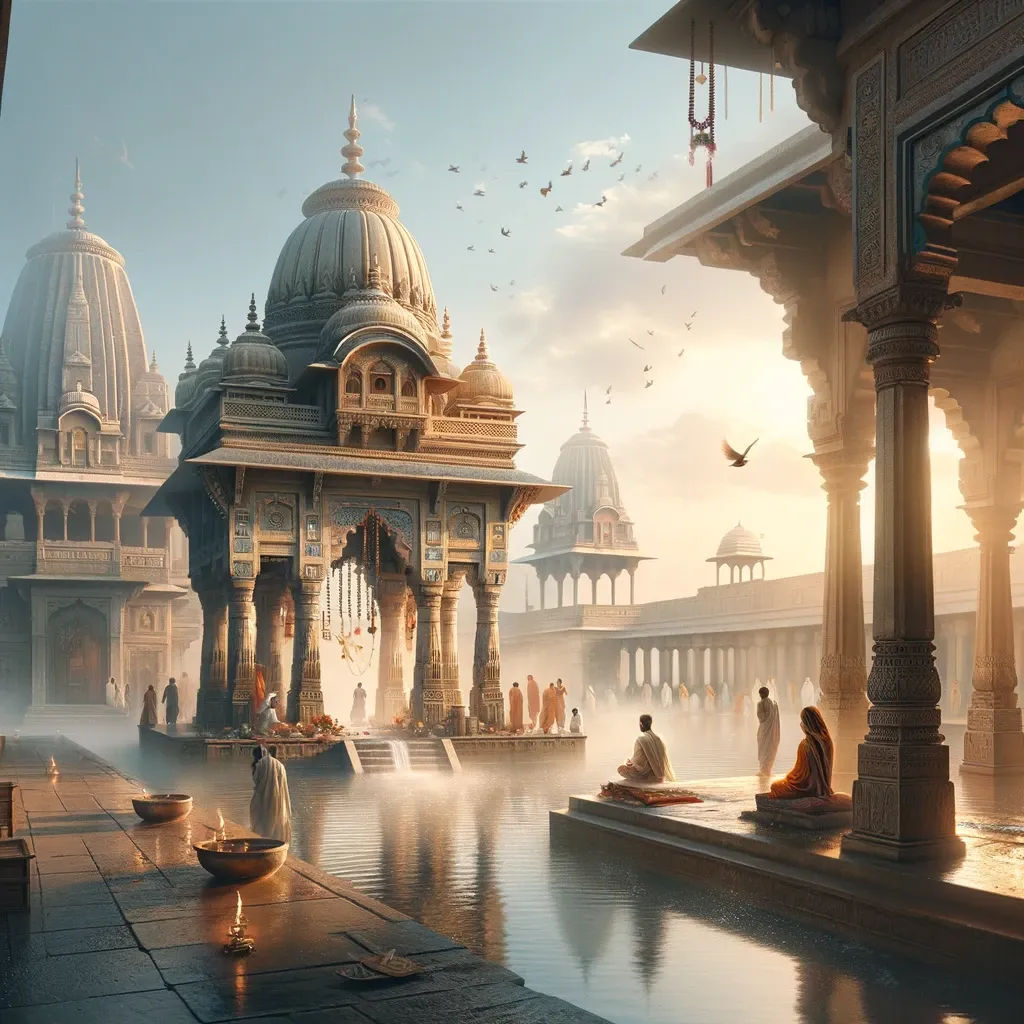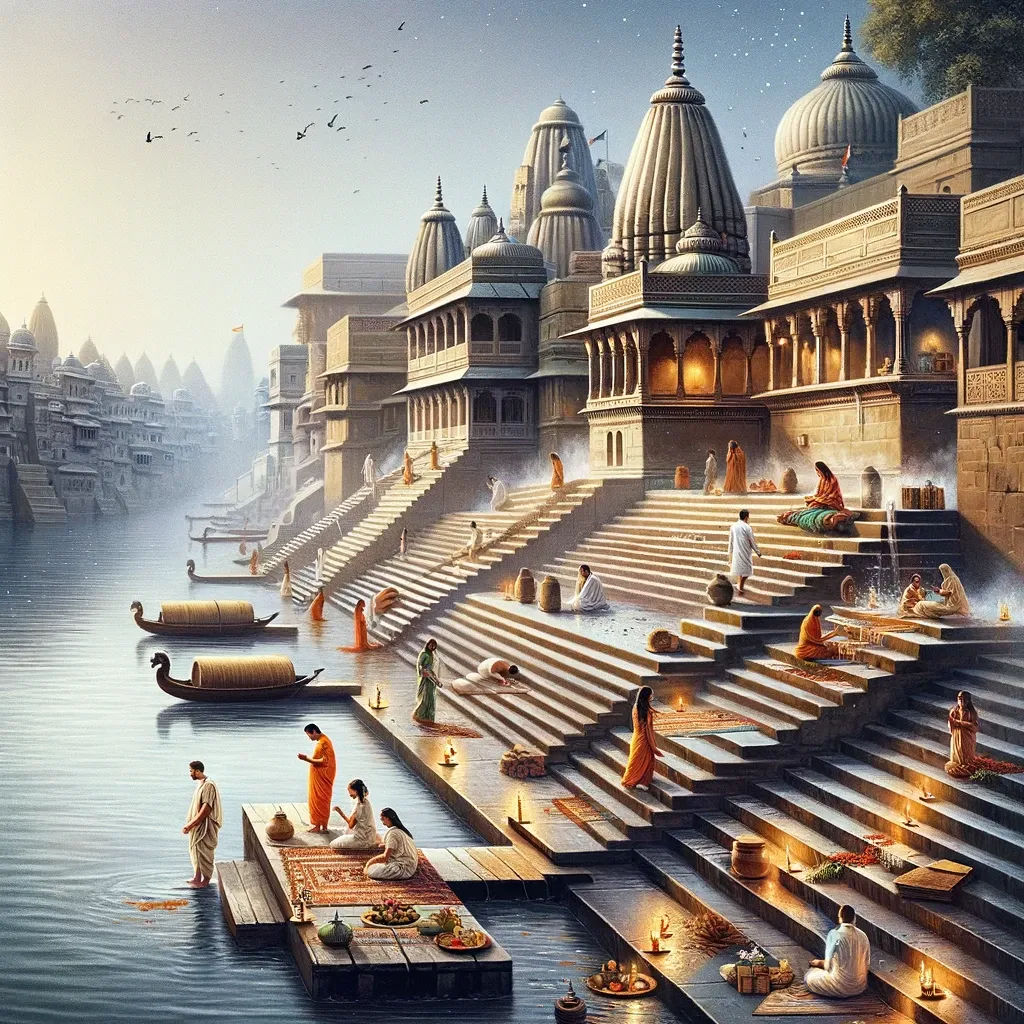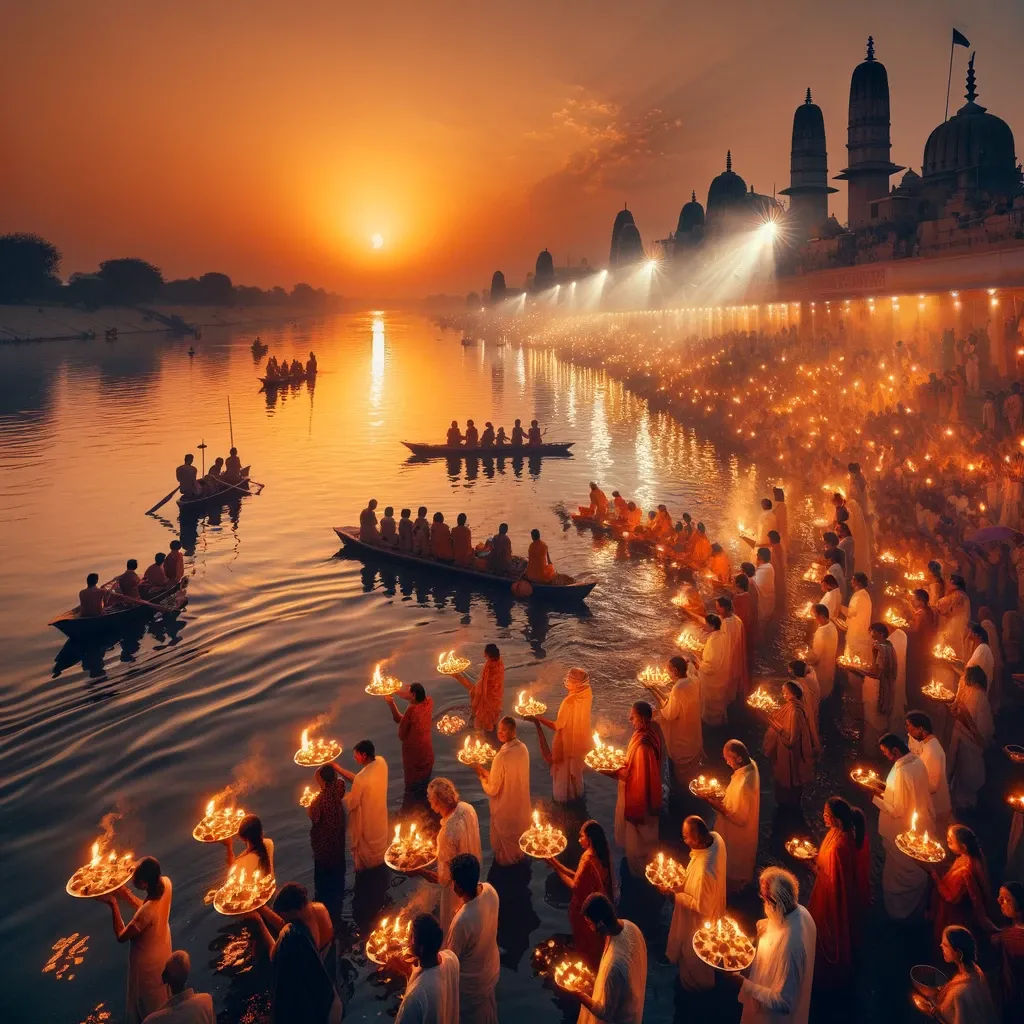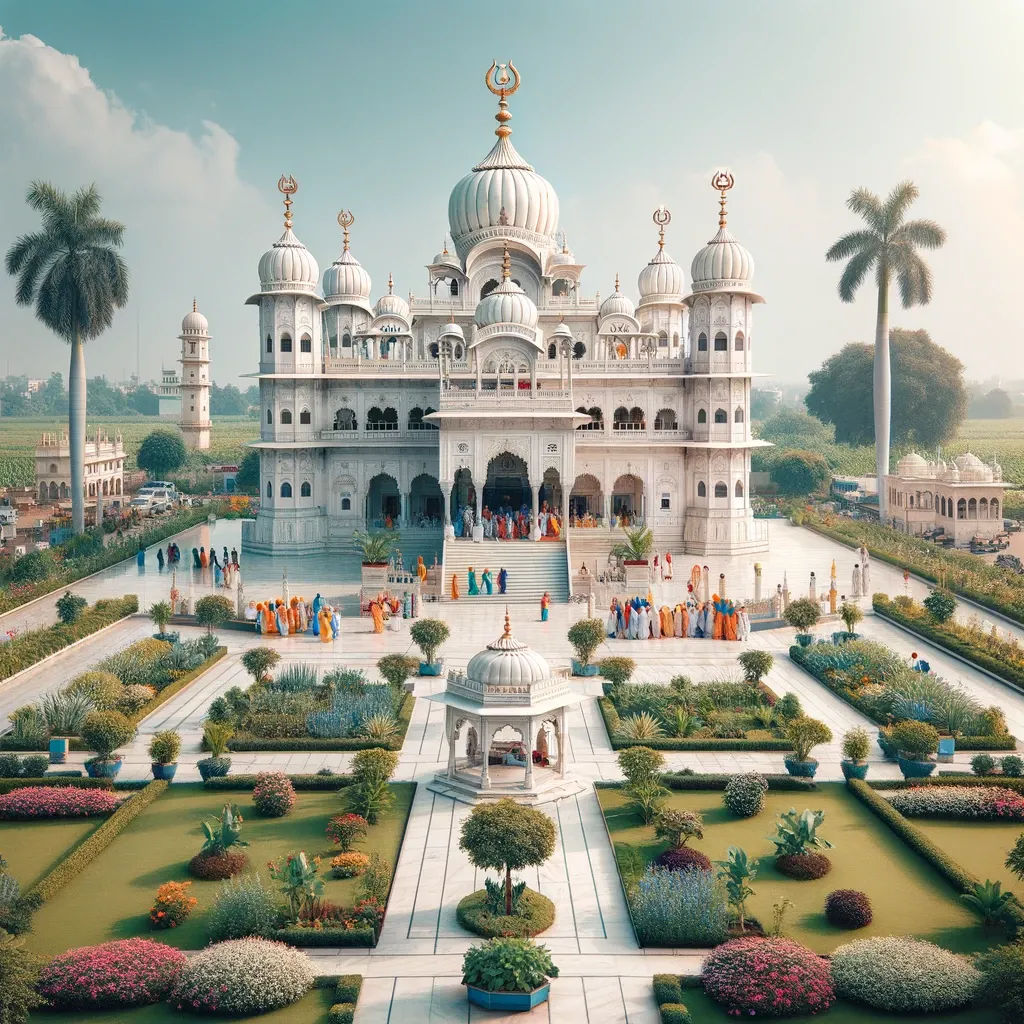Ayodhya: Unveiling the Spiritual Marvels and Cultural Heritage
Swarg Dwar

Swarg Dwar, meaning "Gateway to Heaven," is the place where Hindu mythology believes Lord Rama, the revered deity, took his celestial departure from Earth to Heaven. This spot holds immense significance, marking the culmination of Lord Rama's earthly sojourn and his ascent to divine realms.
Guptar Ghat

Guptar Ghat, nestled on the serene banks of the Sarayu River, holds sacred significance as a revered site for pilgrims seeking spiritual purification through a holy dip. This auspicious spot is revered for its religious sanctity and serene ambiance.
Ram Janmabhoomi

Ram Janmabhoomi holds immense religious significance in Hinduism, believed to be the birthplace of Lord Rama, a revered deity in Hindu mythology. The site in Ayodhya has been a focal point of devotion and contention due to the historical and cultural sentiments attached to it, making it a symbol of faith and heritage for millions of devotees worldwide.
Saaryu Aarti

Saryu Aarti is a spiritual and cultural ceremony performed on the banks of the Saryu River in Ayodhya, India. This ritual involves offering prayers and lighting lamps (aartis) as a tribute to the river, which holds immense significance in Hindu mythology, especially in relation to the epic Ramayana. The Aarti is performed daily at sunset and is a mesmerizing sight, with numerous lamps illuminating the riverfront, accompanied by chants and hymns, creating a serene and devotional atmosphere. It's a profound experience that reflects deep reverence for nature and spiritual beliefs in Hindu culture.
Raja Dashrath Bhawan

Raja Dashrath Bhawan in Ayodhya is a historical site believed to be the palace of King Dashrath, the father of Lord Rama in the Hindu epic Ramayana. This ancient structure is a significant cultural and religious landmark, attracting visitors interested in India's rich mythological and historical heritage.
Nazarbagh Gurudwara

Nazarbagh Gurudwara in Ayodhya is a sacred Sikh temple known for its tranquil setting and beautiful architecture. It's a significant place of worship, reflecting the rich cultural and religious diversity of Ayodhya.